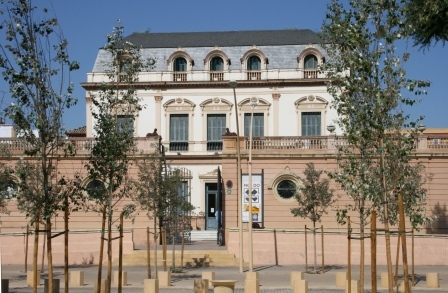|
Alameda De Hércules
The Alameda de Hércules (Hercules mall), or simply La Alameda, is a garden square or mall in Seville, southern Spain. Built in 1574, it was originally a promenaded public garden, named after the eight rows of Populus alba, white poplar trees (''álamos'' in Spanish) that fill its central part. Located in the northern half of the city's ''Casco Antiguo, casco antiguo'' (historic center), between the Guadalquivir River and the Macarena, Seville, Macarena neighbourhood, it was the oldest public garden in Spain and Europe. History Before its urban transformation, the Alameda square was a fragment of the easternmost branch of the Guadalquivir River. It crossed the city center via ''Alameda'' towards ''Plaza Nueva'', eventually ending in the El Arenal, Seville, ''El Arenal'' neighbourhood. After it was cut off by a dam in 1383, the river basin turned into a swampy pond fed by the aquifer and frequent rises of the river. In 1574, the Count of Barajas further drained the water, build ... [...More Info...] [...Related Items...] OR: [Wikipedia] [Google] [Baidu] |
Alameda De Hércules
The Alameda de Hércules (Hercules mall), or simply La Alameda, is a garden square or mall in Seville, southern Spain. Built in 1574, it was originally a promenaded public garden, named after the eight rows of Populus alba, white poplar trees (''álamos'' in Spanish) that fill its central part. Located in the northern half of the city's ''Casco Antiguo, casco antiguo'' (historic center), between the Guadalquivir River and the Macarena, Seville, Macarena neighbourhood, it was the oldest public garden in Spain and Europe. History Before its urban transformation, the Alameda square was a fragment of the easternmost branch of the Guadalquivir River. It crossed the city center via ''Alameda'' towards ''Plaza Nueva'', eventually ending in the El Arenal, Seville, ''El Arenal'' neighbourhood. After it was cut off by a dam in 1383, the river basin turned into a swampy pond fed by the aquifer and frequent rises of the river. In 1574, the Count of Barajas further drained the water, build ... [...More Info...] [...Related Items...] OR: [Wikipedia] [Google] [Baidu] |
